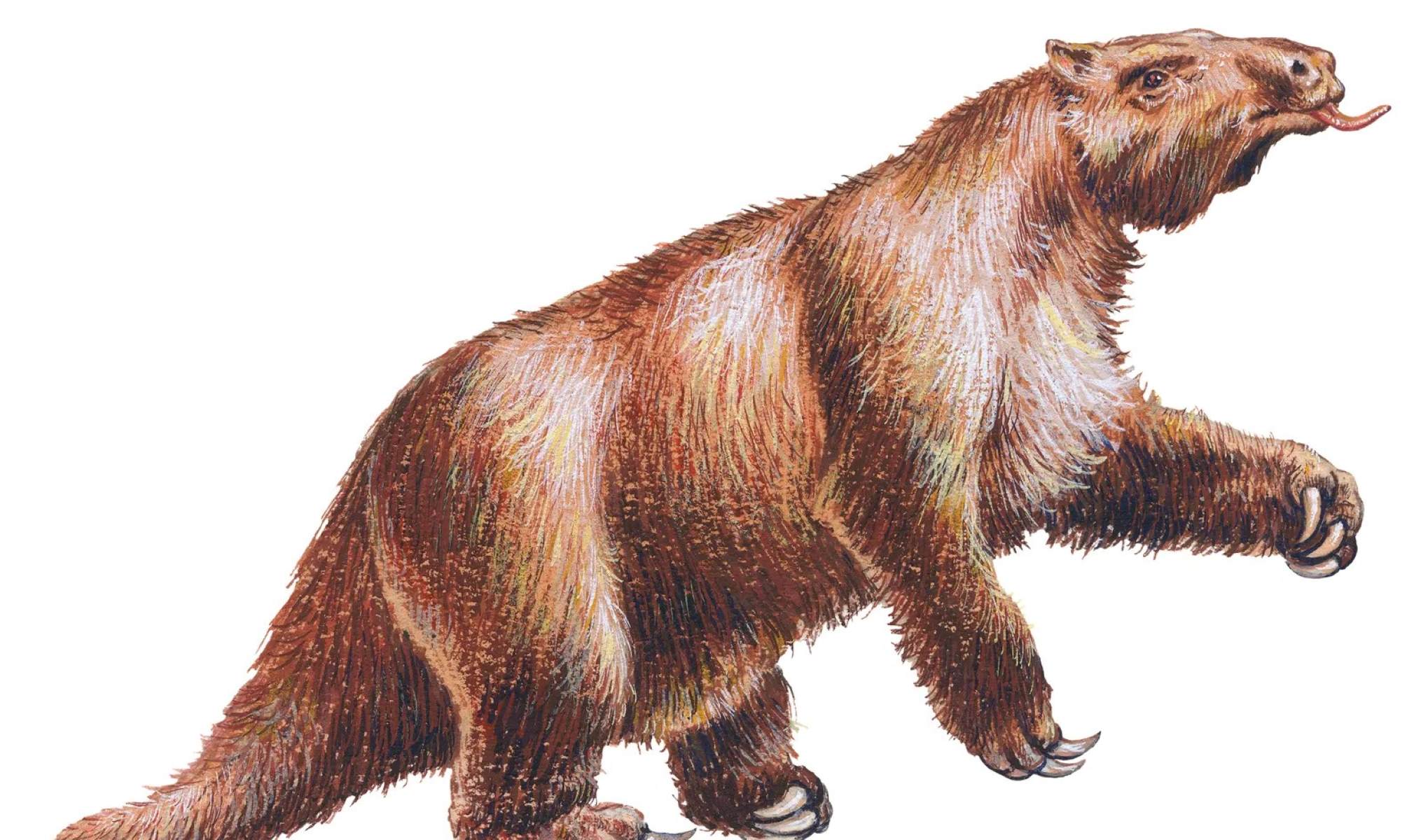
Did you know that giant sloths once roamed the Earth? These colossal creatures, known as Megatherium, were among the largest land mammals ever. Imagine a sloth the size of an elephant! They lived during the Pleistocene epoch, munching on leaves and twigs with their massive claws. Unlike their modern relatives, these giants were ground-dwellers. Fossils have been found in South America, giving us a glimpse into their fascinating world. Giant sloths were not just big but also incredibly strong, capable of fending off predators with their sheer size and power. Curious about these prehistoric titans? Let's dive into 35 intriguing facts about these ancient giants!
Key Takeaways:
- Giant sloths, also known as Megatherium, were enormous herbivores with massive claws and a slow metabolism. They lived in South America, preferred open habitats, and had a long lifespan of 20-30 years.
- The extinction of giant sloths was likely influenced by climate change and human activity. They coexisted with early humans, inspired myths, and continue to fascinate scientists and the public through ongoing research and museum displays.
Giant Sloths: The Behemoths of the Ice Age
Giant sloths, also known as Megatherium, roamed the Earth during the Ice Age. These colossal creatures were fascinating in many ways. Here are some intriguing facts about these ancient giants.
-
Giant sloths were enormous. They could grow up to 20 feet long and weigh as much as 4 tons, making them one of the largest land mammals ever.
-
They were herbivores. Despite their size, giant sloths primarily fed on plants, using their long claws to pull down branches and leaves.
-
Their claws were massive. Each claw could be up to 12 inches long, helping them to reach high vegetation and defend against predators.
-
They had a slow metabolism. This slow metabolic rate meant they didn't need to eat as often as other large animals.
-
Giant sloths were related to modern sloths. Despite their size difference, they share a common ancestor with the small, tree-dwelling sloths we see today.
Habitat and Lifestyle
Understanding where and how giant sloths lived can give us more insight into their daily lives and survival strategies.
-
They lived in South America. Fossils have been found primarily in Argentina, Brazil, and Uruguay.
-
They preferred open habitats. Giant sloths thrived in grasslands and open woodlands, where they could find plenty of food.
-
They were ground-dwellers. Unlike their modern relatives, giant sloths lived on the ground due to their massive size.
-
They were solitary creatures. Evidence suggests that giant sloths lived alone rather than in groups.
-
They had a long lifespan. These creatures could live up to 20-30 years in the wild.
Physical Characteristics
Their unique physical traits set them apart from other prehistoric animals.
-
Thick fur covered their bodies. This fur helped them stay warm during the colder periods of the Ice Age.
-
They had a robust skeletal structure. Their bones were dense and strong to support their massive weight.
-
Their teeth were unique. Giant sloths had peg-like teeth that were perfect for grinding tough plant material.
-
They had a small head. Compared to their body, their head was relatively small, but they had a strong neck to support it.
-
Their tail was long and muscular. This tail helped them balance while reaching for food.
Interaction with Humans
Giant sloths and early humans coexisted for a time, leading to some interesting interactions.
-
Humans hunted giant sloths. Evidence of hunting marks on sloth bones suggests that early humans preyed on these giants.
-
They were depicted in ancient art. Cave paintings in South America show images of giant sloths, indicating their significance to early human cultures.
-
Their bones were used as tools. Early humans utilized giant sloth bones for making tools and weapons.
-
They may have inspired myths. The size and strength of giant sloths could have led to legends and myths among early human societies.
-
They coexisted with other megafauna. Giant sloths shared their habitat with other large animals like saber-toothed cats and mammoths.
Extinction
The reasons behind the extinction of giant sloths are still debated among scientists.
-
Climate change played a role. The end of the Ice Age brought significant climate changes that affected their habitat and food sources.
-
Human activity contributed. Increased hunting pressure from early humans likely accelerated their decline.
-
They went extinct around 10,000 years ago. This timeline coincides with the arrival of humans in South America.
-
Their extinction was part of a larger pattern. Many large mammals went extinct around the same time, suggesting a broader environmental shift.
-
Fossils provide clues. Studying their fossils helps scientists understand the factors that led to their extinction.
Scientific Discoveries
Ongoing research continues to reveal new information about these fascinating creatures.
-
First discovered in the 18th century. The first giant sloth fossils were found in 1788 in Argentina.
-
Named by Georges Cuvier. The famous French naturalist named them Megatherium, meaning "great beast."
-
Fossils are well-preserved. Many giant sloth fossils are remarkably intact, providing valuable insights into their anatomy and lifestyle.
-
DNA analysis is possible. Advances in technology have allowed scientists to extract and study DNA from giant sloth fossils.
-
They are a subject of ongoing research. Scientists continue to study giant sloths to learn more about their biology and extinction.
Fun Facts
Here are some lighter, fun facts about these incredible creatures.
-
They had a slow pace. Giant sloths moved very slowly, much like their modern relatives.
-
They could stand on two legs. When reaching for high branches, they could balance on their hind legs.
-
They had a strong sense of smell. This sense helped them locate food in their vast habitats.
-
Their fossils are displayed in museums. Many museums around the world have giant sloth skeletons on display.
-
They continue to captivate imaginations. The sheer size and unique characteristics of giant sloths make them a popular subject in books, movies, and documentaries.
The Last Word on Giant Sloths
Giant sloths were truly fascinating creatures. These massive mammals roamed the Earth millions of years ago, leaving behind a legacy that still captivates scientists and enthusiasts alike. Their unique adaptations, like their enormous claws and slow metabolism, made them stand out in the animal kingdom. Fossil evidence has provided a glimpse into their lives, revealing their diet, habitat, and even some of their behaviors.
Understanding these ancient giants helps us appreciate the diversity of life that once existed on our planet. It also underscores the importance of preserving our current biodiversity. While giant sloths are long gone, their story continues to inspire curiosity and wonder. So next time you think about prehistoric creatures, remember the giant sloth and the incredible mark it left on history.
Frequently Asked Questions
Was this page helpful?
Our commitment to delivering trustworthy and engaging content is at the heart of what we do. Each fact on our site is contributed by real users like you, bringing a wealth of diverse insights and information. To ensure the highest standards of accuracy and reliability, our dedicated editors meticulously review each submission. This process guarantees that the facts we share are not only fascinating but also credible. Trust in our commitment to quality and authenticity as you explore and learn with us.

